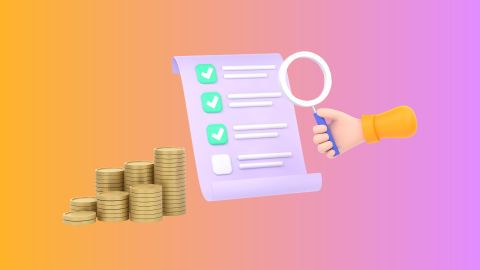Business planning is a fundamental process that serves as the blueprint for any successful venture. Whether you’re a budding entrepreneur or managing a large enterprise, creating a detailed and actionable business plan is crucial for growth and sustainability. This guide provides a step-by-step approach to business planning, covering essential components such as goal setting, market analysis, strategic and financial planning, and operational structures. From developing a solid business model to crafting marketing strategies and securing financing, the content offers insights on how to navigate the planning process effectively. By the end, readers will understand how to build a strategic roadmap to drive their business toward long-term success, attract investors, and manage risks.
What is business planning?
Business planning is a comprehensive, strategic process that involves defining a business's vision and objectives, and detailing the strategies and actions needed to achieve them. It serves as a roadmap for business success, guiding decisions and operations. This process encompasses several key components:
- Goal setting: Establishing clear, achievable objectives is the first step in business planning. These goals should be Specific, Measurable, Achievable, Relevant, and Time-bound (SMART). Goal setting provides direction and benchmarks for measuring progress, ensuring all team members are aligned with the business's mission and vision.
- Market analysis: Understanding the competitive landscape and target audience is crucial. Market analysis involves researching industry trends, identifying competitors, and analysing customer needs and preferences. This information helps in identifying market opportunities, potential threats, and areas for differentiation.
- Strategic planning: This involves outlining the steps required to reach business goals. Strategic planning includes defining the business's value proposition, developing marketing and sales strategies, and identifying key performance indicators (KPIs). It sets the direction for growth and outlines the methods to overcome challenges.
- Financial planning: Projecting future financial needs and returns is essential for sustaining and growing a business. Financial planning involves creating budgets, forecasting revenues and expenses, and determining funding requirements. It includes preparing financial statements such as income statements, balance sheets, and cash flow statements to ensure financial health and attract investors.
- Operational planning: Determining the resources required, including manpower, materials, and technology, is part of operational planning. This component focuses on day-to-day operations, ensuring that the business has the necessary resources and processes in place to function efficiently. It includes planning for production, inventory management, supply chain logistics, and workforce planning.
Business planning is an iterative process, requiring regular review and adjustment to respond to changing market conditions and business circumstances. A well-crafted business plan not only helps in securing funding but also provides a strategic framework for decision-making and long-term success.
A solid business plan not only guides the business towards its goals but also helps attract investors and secure financing.
Importance of business planning
Here’s why business planning is important:
- Clarifies vision and goals: A business plan defines the purpose, vision, and measurable objectives, ensuring everyone works towards the same direction.
- Secures funding support: Investors and banks rely on detailed business plans to assess viability, financial projections, and potential returns before providing capital.
- Guides informed decisions: With strategies and forecasts clearly outlined, entrepreneurs can make data-driven choices and reduce risks.
- Strengthens focus and accountability: Planning highlights strengths, weaknesses, opportunities, and threats, helping teams prioritise tasks and stay accountable for results.
- Prepares for challenges: Identifying risks in advance allows businesses to create contingency measures and stay resilient in changing conditions.
- Drives growth and expansion: A structured plan acts as a roadmap for scaling operations, entering new markets, and ensuring resources are in place for sustainable growth.
- Tracks performance effectively: By setting benchmarks and KPIs, business plans allow regular progress reviews and timely adjustments to stay aligned with goals.
Stages of the business planning process
Here’s a step-by-step guide to the key stages of the business planning process:
- Idea generation and concept: Start with identifying a market opportunity or a problem that needs solving. Refine it into a clear concept with a strong value proposition.
- Market research: Analyse the target audience, customer needs, competitors, and industry trends. This validates the idea and helps shape pricing and positioning.
- Business model design: Define how the business will create, deliver, and capture value. Outline revenue streams, costs, and scalability across regions or customer groups.
- Setting objectives: Establish measurable short-term and long-term goals. These may include revenue targets, customer satisfaction, or brand visibility milestones.
- Strategy development: Create a roadmap to achieve objectives. Cover marketing approach, product positioning, pricing, distribution, and competitive advantages.
- Marketing plan: Lay out how customers will be attracted and retained. Define channels, promotional activities, digital strategies, and budget allocation.
- Financial planning: Prepare revenue forecasts, cost structures, profit margins, and break-even analysis. Highlight funding needs and possible sources of capital.
- Operational plan: Detail day-to-day processes, supply chain management, staffing, and technology support needed to deliver products or services smoothly.
- Legal setup and compliance: Choose a suitable legal structure such as sole proprietorship, LLP, or private limited company. Register with authorities, obtain GST and industry-specific licences.
- Risk and contingency planning: Identify internal and external risks, from regulatory changes to supply disruptions. Develop backup strategies to minimise impact.
- Implementation and monitoring: Execute the plan, assign responsibilities, and track KPIs. Make timely adjustments to stay aligned with goals and market conditions.
- Review and adaptation: Regularly update the business plan to reflect new challenges, market shifts, or customer feedback, ensuring it stays relevant.
Steps to create a successful business plan
Creating a successful business plan involves several crucial steps, each integral to the overall success of your business. Here’s a detailed guide to help you through the process:
- Do your research: Start by conducting thorough research on your industry, target market, and competitors. Understand market trends, customer needs, and potential gaps that your business can fill. Gather data through surveys, focus groups, and market analysis reports. This research will form the foundation of your business plan, ensuring that your strategies are grounded in reality.
- Strategise: Based on your research, develop a clear strategy that outlines how your business will overcome challenges and capitalize on opportunities. Define your business’s unique selling proposition (USP) and core values. Establish short-term and long-term goals, and detail the tactics you will use to achieve them. Consider marketing strategies, operational plans, and potential partnerships.
- Calculate your financial forecast: Provide detailed financial projections to understand the financial viability of your business. This includes projected income statements, cash flow statements, and balance sheets for at least the first three to five years. Identify your startup costs, break-even point, and funding requirements. This step is crucial for attracting investors and securing loans, as it demonstrates the potential profitability of your business.
- Draft your business plan: Compile all the collected data and strategies into a coherent and comprehensive document. Your business plan should include an executive summary, business description, market analysis, organizational structure, product line or services, marketing and sales strategies, funding request, financial projections, and an appendix with supporting documents. Ensure the plan is clear, concise, and professional, as it will serve as a roadmap for your business and a pitch to potential investors.
By meticulously following these steps, you can create a business plan that not only guides your business to success but also convinces stakeholders of its potential.
Conclusion
In conclusion, effective business planning is essential for setting a clear path for growth and success. A well-drafted business plan acts as a roadmap for the business, providing direction and a clear outline of goals and strategies. It is crucial for securing business loans and attracting investors by demonstrating the business's potential for profitability and sustained growth.
Some of the key features of our business loan are:
- No collateral required: You do not have to pledge any collateral to get our business loan, which is beneficial for small businesses without substantial assets.
- Competitive interest rates: The interest rates for our business loans range from 14% to 25% per annum.
- Flexible repayment schedules: Repayment terms can be tailored to align with the business's cash flow, helping manage finances without strain. You can choose a tenure ranging from 6 months to 96 months.
These features and benefits of business loans make them a highly accessible and practical financial tool for starting your business.
Bajaj Finserv app for all your financial needs and goals
Trusted by 50 million+ customers in India, Bajaj Finserv App is a one-stop solution for all your financial needs and goals.
You can use the Bajaj Finserv App to:
- Apply for loans online, such as Instant Personal Loan, Home Loan, Business Loan, Gold Loan, and more.
- Invest in fixed deposits and mutual funds on the app.
- Choose from multiple insurance for your health, motor and even pocket insurance, from various insurance providers.
- Pay and manage your bills and recharges using the BBPS platform. Use Bajaj Pay and Bajaj Wallet for quick and simple money transfers and transactions.
- Apply for Insta EMI Card and get a pre-qualified limit on the app. Explore over 1 million products on the app that can be purchased from a partner store on Easy EMIs.
- Shop from over 100+ brand partners that offer a diverse range of products and services.
- Use specialised tools like EMI calculators, SIP Calculators
- Check your credit score, download loan statements and even get quick customer support—all on the app.
Download the Bajaj Finserv App today and experience the convenience of managing your finances on one app.
Disclaimer
While care is taken to update the information, products, and services included in or available on our website and related platforms/websites, there may be inadvertent inaccuracies or typographical errors or delays in updating the information. The material contained in this site, and on associated web pages, is for reference and general information purposes and the details mentioned in the respective product/service document shall prevail in case of any inconsistency. Subscribers and users should seek professional advice before acting on the basis of the information contained herein. Please make an informed decision with respect to any product or service after going through the relevant product/service document and applicable terms and conditions. In case any inconsistencies are observed, please click on reach us.
*Terms and conditions apply






